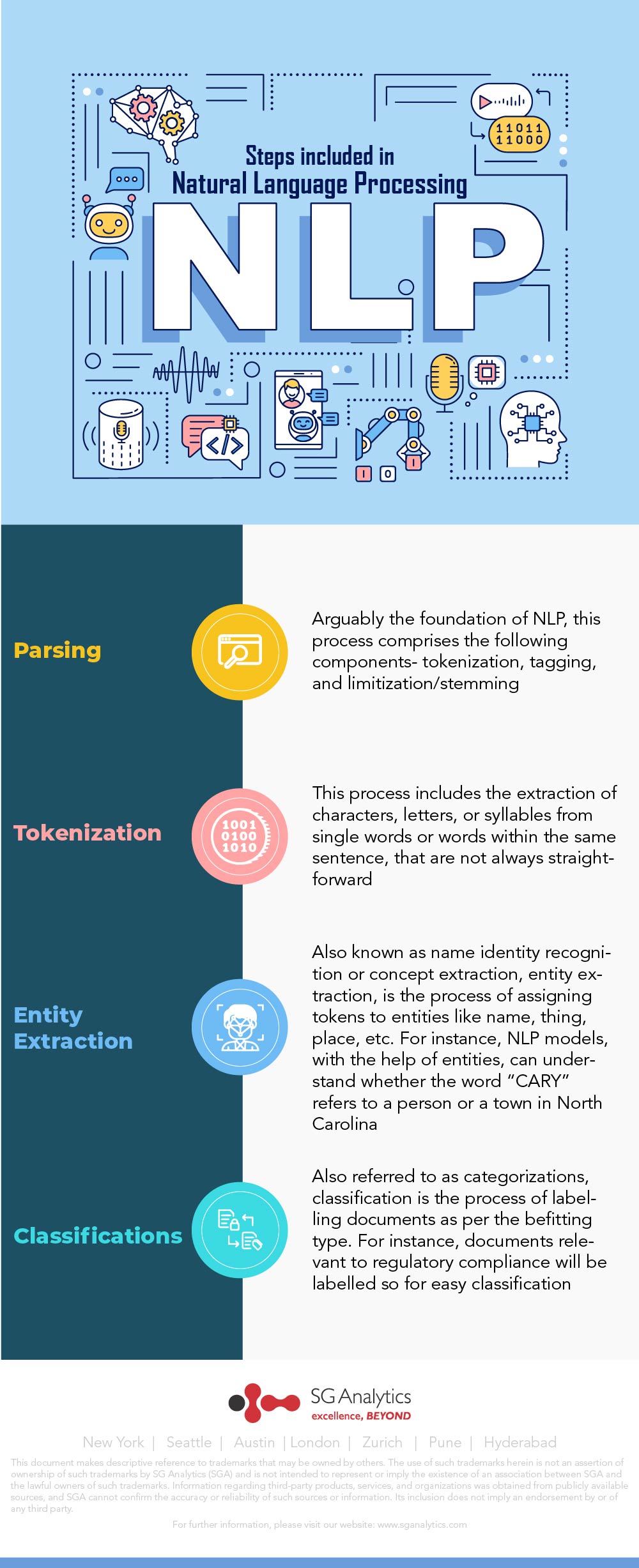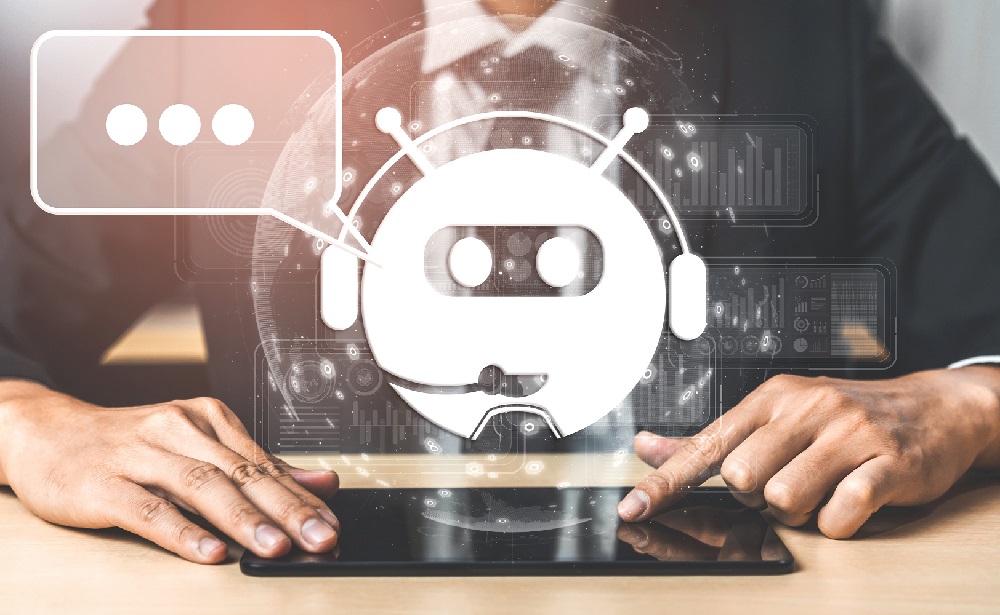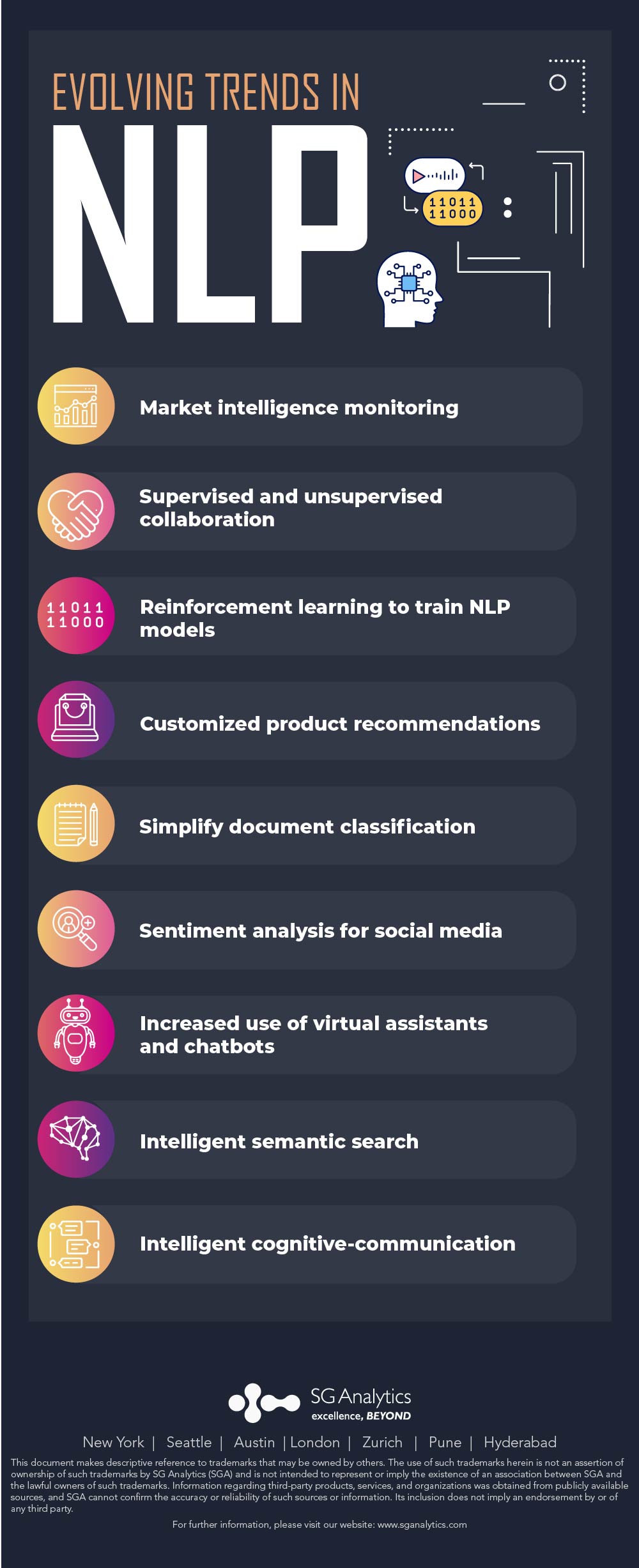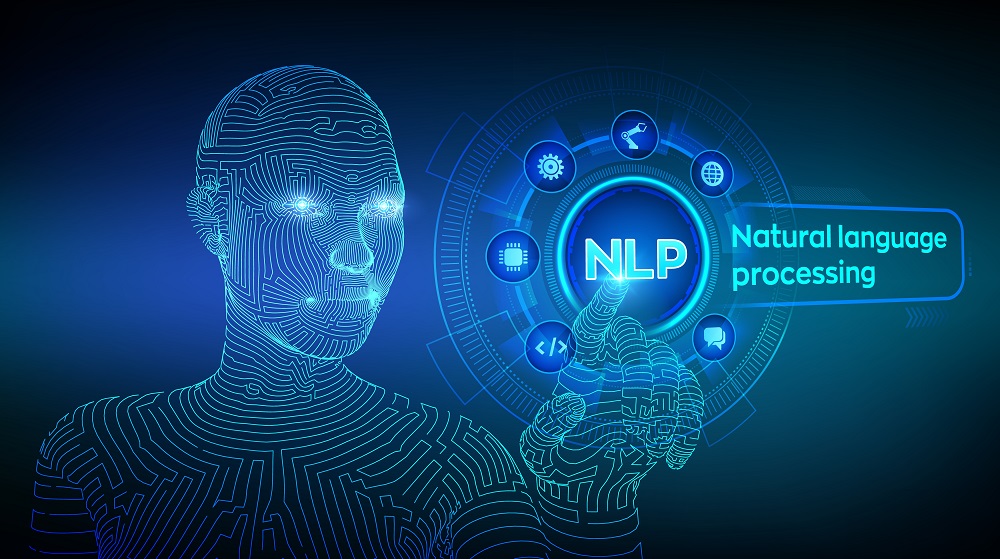The NLP market is forecasted to be 14X larger in 2025 than it was in 2017, which means the value of NLP will rise from 3 bn dollars in 2017 to more than 43 bn dollars in 2025 (Statista).
Know more about how the NLP disruption is changing business operations and the top trends in the field of NLP in this article.
Evolution of NLP
Commonly identified as NLP, Natural Language Processing translates human commands into computer language, thereby making the user interface much more convenient and easy to use. NLP has evolved a lot since its origin in the 1940s. Initially termed as Machine Translation (MT), NLP was invented to help soldiers understand messages in foreign languages. This is when the idea to convert human language into computer coding evolved, as in those times computer language wasn’t something that could be easily learned and only a handful of people could operate such devices.
In current times, NPL is combined with the enabling technology, Artificial Intelligence, and the combination has become extremely popular within a short time. ALEXA is a perfect example of modern-day NLP. Today, Alexa is used to set reminders, make calls and send messages automatically, and even control TV, lights, and other smart equipment through voice command.
A quick introduction to NLP
Natural Language Processing helps in the natural manipulation of normal languages like text and speech and perfecting the communication between humans and computers. In simple terms, NLP enables computers to hear speech or read a text, interpret it, identify the sentiment, and select the vital portions. Following are the steps included in Natural Language Processing:
Parsing
Arguably the foundation of NLP, this process comprises the following components- tokenization, tagging, and limitization/stemming. Tokenization is the process of splitting words or text. Tagging is the process of assigning different parts of speech to different words. Limitization is something similar to taxonomies, where the word will be mapped back to its root form in order to identify variations across terms and spot spelling errors.
Tokenization
This process includes the extraction of characters, letters, or syllables from single words or words within the same sentence, that are not always straightforward. For example, it makes sense to separate sentences between periods, but splitting dates or abbreviations does not fit this practice. Tokens are basically individual terms or sentences and tokenization refers to the splitting of content, in terms of words or sentences.

Entity Extraction
Also known as name identity recognition or concept extraction, entity extraction, is the process of assigning tokens to entities like name, thing, place, etc. For instance, NLP models, with the help of entities, can understand whether the word “CARY” refers to a person or a town in North Carolina.
Classifications
Also referred to as categorizations, classification is the process of labelling documents as per the befitting type. For instance, documents relevant to regulatory compliance will be labelled so for easy classification. Also, classification predominantly compliments sentiment analysis and enables users to classify comments that are positive, negative, and neutral.
NLP – How businesses can benefit from it?
Right from discussion analysis and client support to reviewing and requesting systems, NLP offers various business benefits. Also, NLP facilitates higher consumer loyalty, improved analysis, reduced costs, and more effective discussions when the right chatbot is used for communication. Find below a couple of instances to understand why chatbot needs natural language processing, and how the two can aid businesses:

Improved market research and analysis
NLP-based chatbots and software systems can help in performing in-depth market research and analysis by garnering information from client reviews and media comments to internal and external inquiry queries. With these chatbots, businesses can not only gather data in real-time but also reduce expenditure on data collection.
Mitigate inefficiency and cost
When the business is profitable, there are more possibilities to mitigate costs whenever required. Every company aspires to increase revenue. With the help of NLP-trained chatbots, businesses can effectively reduce expenses associated with duplicative and physical duties. This in turn also helps in improving efficiency.
Evolving trends in NLP
Every technology is evolving. So is Natural Language Processing. Following are some of the latest trends in NLP to look out for in 2021:
Market Intelligence Monitoring
NLP is anticipated to revolutionize the marketing field in the near future, although at present it is used only in financial marketing. With NLP, businesses can better determine market conditions and other related information. In the coming years, there are increased chances of NLP becoming a primary tool for monitoring market conditions. Businesses are more likely to leverage intelligence information from natural language processing to plan future strategies.
Supervised and Unsupervised collaboration
NLP can reach the next level of potential when supervised and unsupervised learning is used together. For instance, in text analytics, people had to examine documents with utmost care. Combining supervised learning with unsupervised learning helps in making this task easier and less time-consuming. While one helps in understanding all the terms associated with the topic, the other helps in establishing the relationship between the terms.
Reinforcement learning to train NLP models
Reinforced Learning (RL) has improved significantly over the years. Yet, even today, training of RL models is uncertain as well as a time-consuming task. There are fields such as sample efficiency, training time, and overall practices, in which Reinforced Learning can be improvised. This generally occurs when a Reinforced Learning model is trained from scratch. To solve this problem, data experts have come up with a new technique – use supervised models trained on NLP alongside RL to improve them.
Customized product recommendations

Consumers, particularly millennials, are enjoying shopping at the comfort of their couches rather than hitting a brick and mortar store. Therefore, retailers who plan to establish or expand their online business can study changing consumer behaviours with the help of NLP and the process of recommendation system. Some of the famous shopping apps and websites like Amazon are analyzing customer behaviours using customers’ buying history, browsing history, wish list, etc. This information enables retailers to provide customized product recommendations, thereby making it easier for customers to browse and find products as well as improve customer experience and satisfaction.
Simplify document classification
Deep learning has various applications in the field of NLP. This also means that NLP might have certain limitations in terms of accuracy. With RNN-Recurrent Neural Networks text classification can be made easy and simple. Besides document classification, RNN will bring about improvements in the area of the analytics platform.
Sentiment Analysis for social media
Social media is of paramount importance for businesses today, as they play a major role now in helping companies connect with their customers and influencing their purchase decisions. NLP helps in performing sentiment analysis more effectively. With the help of sentiment analysis, companies can assess the nature, mood, and views of the people on any particular topic like travel, health, politics, etc.
Increased use of virtual assistants and chatbots
Virtual assistants and chatbots have become inevitable in today’s AI-first world. The chatbot market that was estimated to be worth nearly $2.6 bn in 2019 is expected to reach almost $9.4 bn by 2024 (analytics steps). Increased voice search means an increased need for NLP.

Intelligent semantic search
The brand-new semantic search technology can improve searching using NLP. In other words, the browser will no longer search for the individual meaning of the words within the entered term rather will search for the broad meaning of the entered term. Thus, users can find any type of information in a much easier and quicker way.
Intelligent cognitive-communication
In a way, intelligent cognitive-communication is similar to semantic search. In simple terms, cognitive-communication aims to make communication easy and understandable for both parties. Intelligent cognitive-communication will make use of supervised and unsupervised learning along with other NL technologies to improve the interpretability of any kind of communication.
Wrapping Up
As consumer behaviour monitoring and business intelligence are becoming increasingly important, the relevance of NLP will soar in the upcoming years. With natural language processing, businesses can not only comprehend and analyze customer responses but also assess the attitude and emotional state of the customer more granularly and optimize their business initiatives accordingly.









